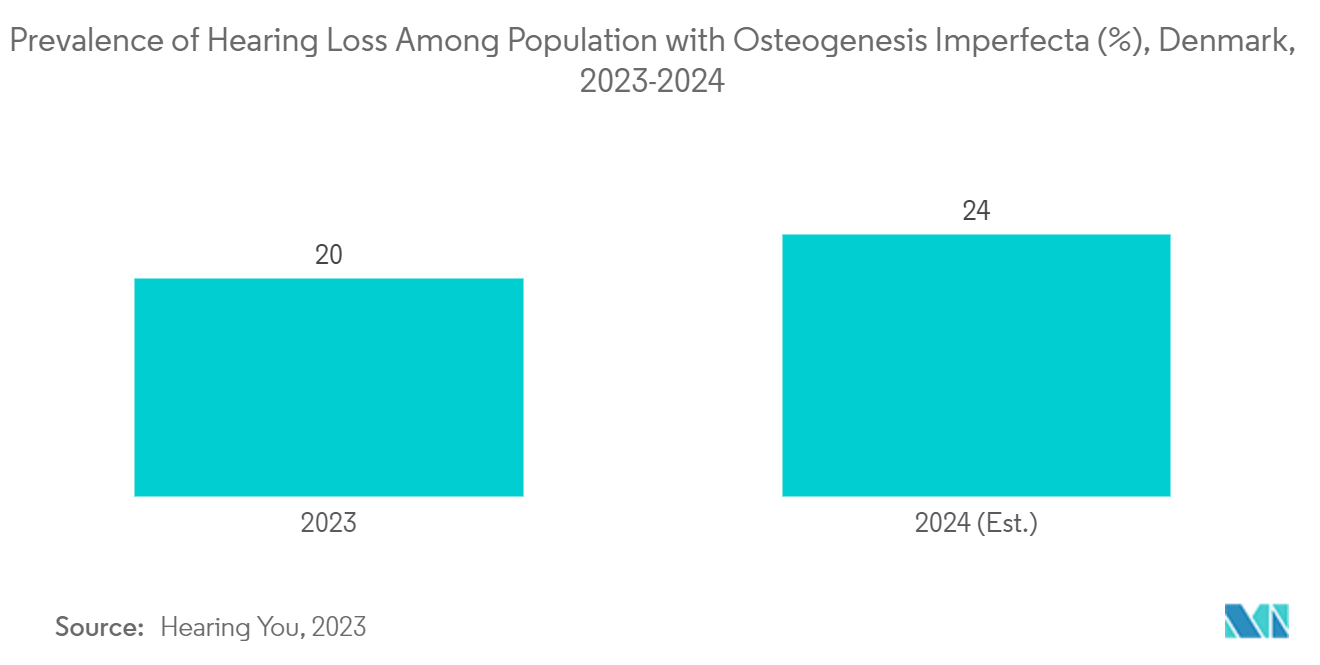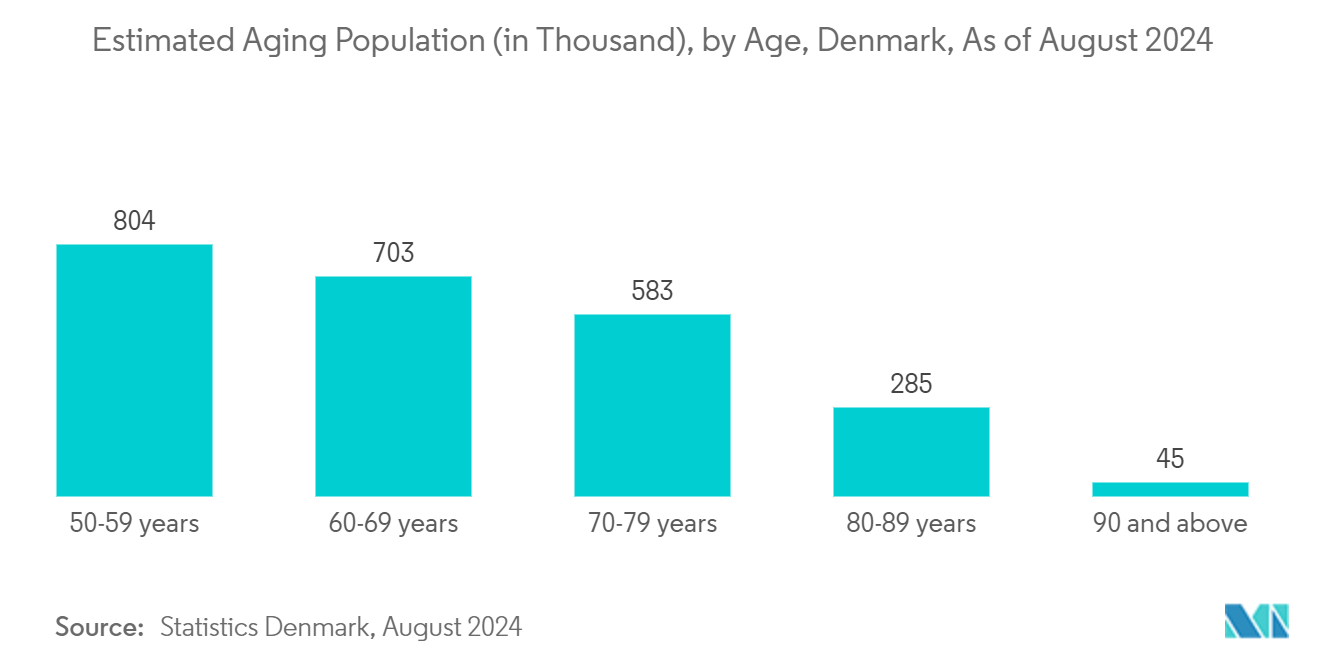Market Trends of Denmark Hearing Aids Industry
Receiver-in-the-Ear (RITE)/Receiver-in-Canal (RIC) Segment Expected to Witness Significant Growth Over the Forecast Period
Receiver-in-the-ear (RITE) hearing aids are located in the ear with a thin wire connecting it to a small behind-the-ear (BTE) casing. The receiver-in-canal (RIC) device is placed directly in the ear canal and connected to a small BTE unit via a thin wire.
The receiver-in-the-ear (RITE)/receiver-in-canal (RIC) segment is expected to witness significant growth in the Danish hearing aids market owing to factors such as the rising prevalence of hearing loss, coupled with the growing aging population, technological advancements in RITE/RIC hearing aids, and the advantages offered by RITE/RIC.
The increasing recognition of technologically advanced hearing aids by companies is anticipated to increase their demand, which in turn, is expected to augment the segment’s growth over the forecast period. For instance, in May 2024, WSAudiology, a Denmark-based company, reported that the Widex SmartRIC hearing aid was awarded the Golden A’ Design Award in the Medical Devices and Medical Equipment Design category for introducing new angles of natural hearing through its industry-first L-shape design. Thus, the development of technologically advanced hearing aids is expected to propel their adoption among users, which, in turn, is anticipated to bolster the segment’s growth over the forecast period.
Similarly, in February 2023, Oticon, a Denmark-based company, launched Oticon Real in the three top price points in the miniRITE and miniBTE styles, both with and without rechargeability. The improvements in Oticon Real were made through the new Polaris R platform, containing new, extremely fast detectors that capture and adjust annoying and sudden sounds. Thus, such developments are expected to boost the demand for such products in the market, which is anticipated to spur the segment’s growth over the forecast period.
Therefore, owing to the new product launches and growing product recognition, the segment is expected to grow over the forecast period.

Completely-in-Canal Hearing Aid Segment Expected to Witness Significant Growth Over the Forecast Period
Completely-in-canal hearing aids are custom-fit devices designed to sit partially in the ear canal. Their discreet nature, being less visible than larger models, makes them a preferred choice for individuals seeking subtlety. These aids not only deliver commendable sound quality but also cater to a spectrum of hearing loss levels. The anticipated growth of this segment during the forecast period can be attributed to several factors, such as the inherent advantages of the small, custom design, technological advancements in sound quality and noise reduction, heightened awareness about hearing health, and the recognized benefits of early intervention.
Danish researchers conducted various studies to screen the population for complicated hearing loss and serious ear disorders in hearing-impaired adults before administering hearing aid treatments. For instance, an article published in Frontiers in Digital Health in June 2023 highlighted that hearing loss (HL) detrimentally impacts the quality of life, leading to increased social distancing, early retirement, and heightened risks of anxiety, depression, and dementia.
In addition to the above context, the RESA digital screening method demonstrated a significantly higher accuracy compared to traditional physical assessments by in-person ENT specialists. This digital approach allows ENT specialists to evaluate hearing-impaired individuals remotely, expediting the assessment process and minimizing diagnostic and treatment delays. Consequently, these advanced digital assessment devices facilitate earlier and more precise detection of hearing loss, prompting timely interventions. This trend is expected to drive the demand for hearing aids, thereby bolstering market growth.
Moreover, the rise of technologically advanced hearing aids is set to boost their market presence, driving overall growth. For instance, in August 2024, GN, a pioneer in hearing aid innovation in Denmark, unveiled two new additions to its ReSound Nexia family, the smallest in-the-canal (ITC) hearing aid in a wireless non-rechargeable format and a new wireless rechargeable CROS behind-the-ear (BTE) solution. These innovations not only offer enhanced options for those with hearing impairments but also mark a significant leap into the next era of Bluetooth connectivity.
Therefore, owing to the increasing number of studies related to hearing loss and its impact on overall mental health and new product launches by key players, the segment is expected to grow over the forecast period.


